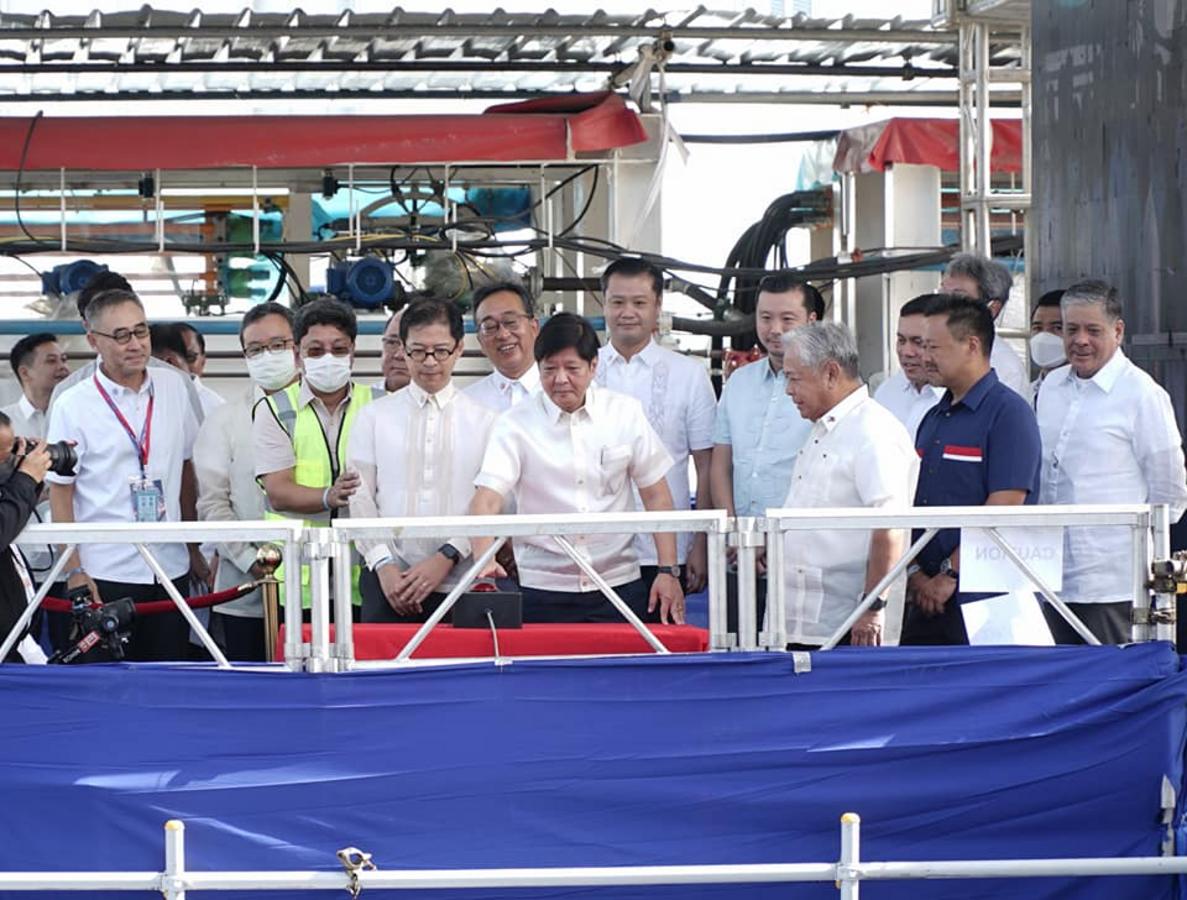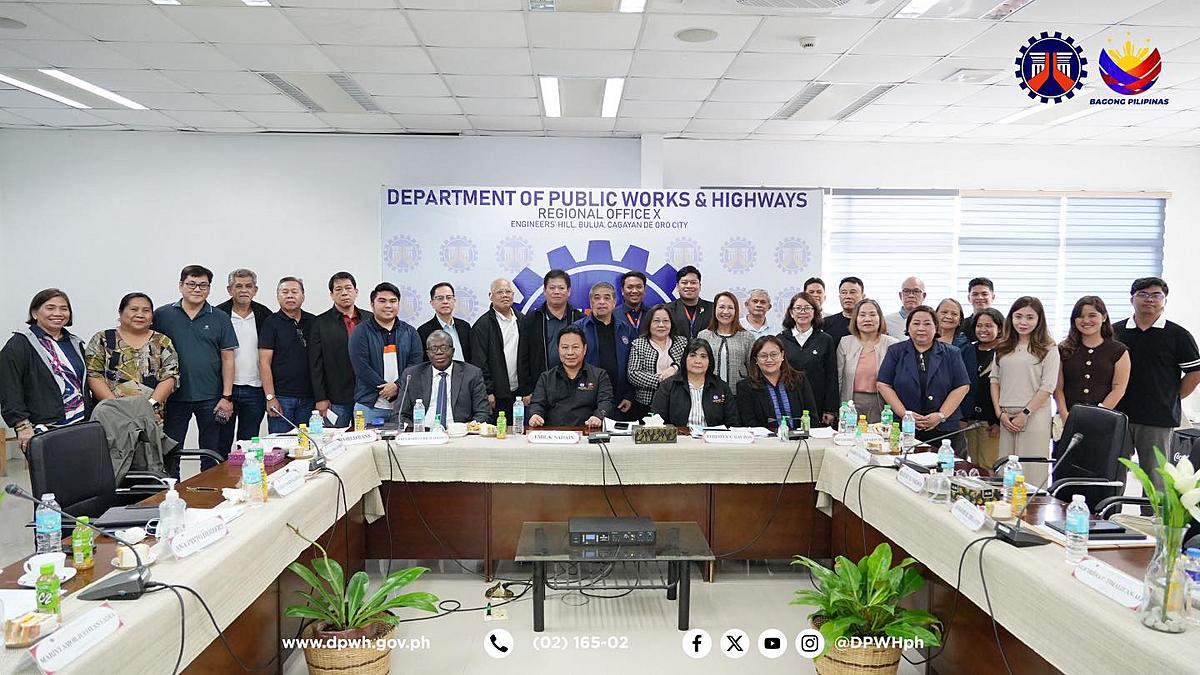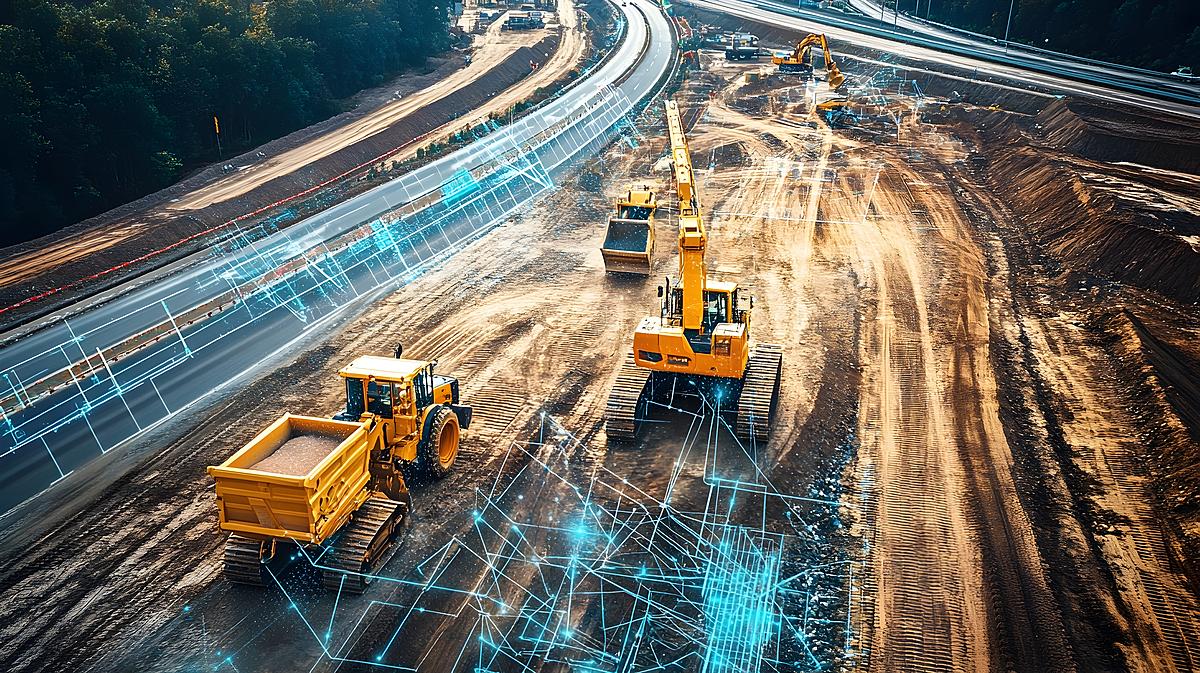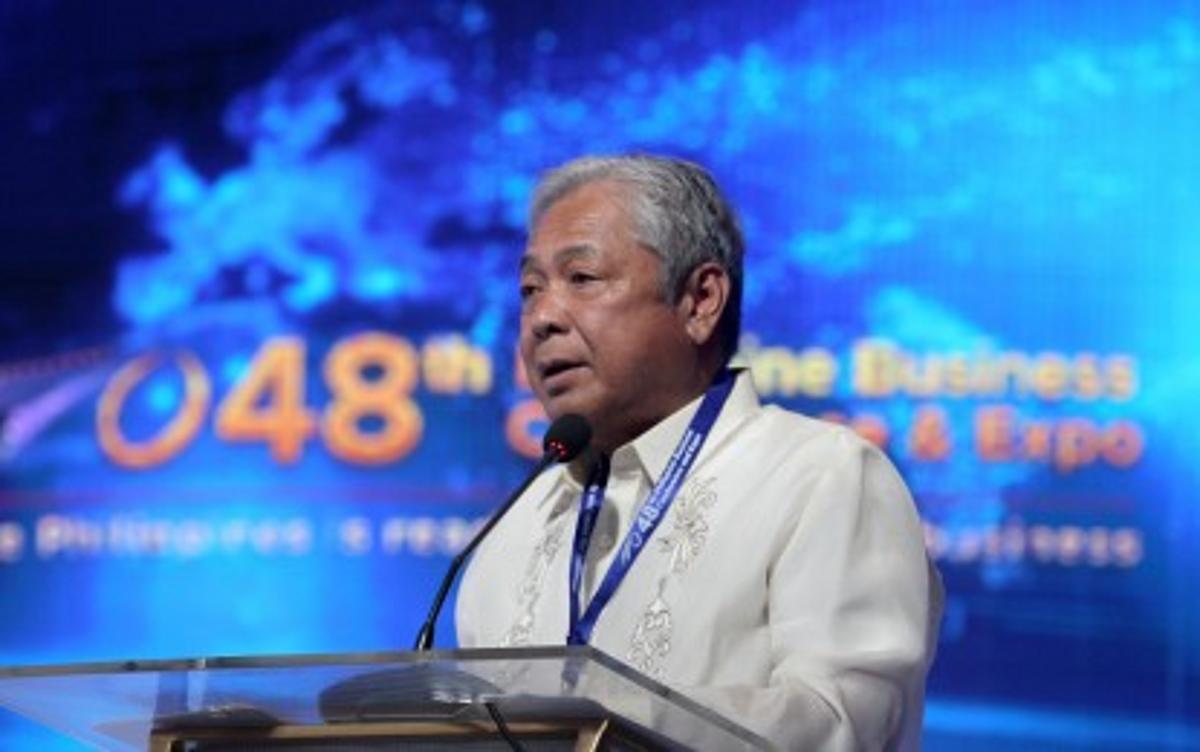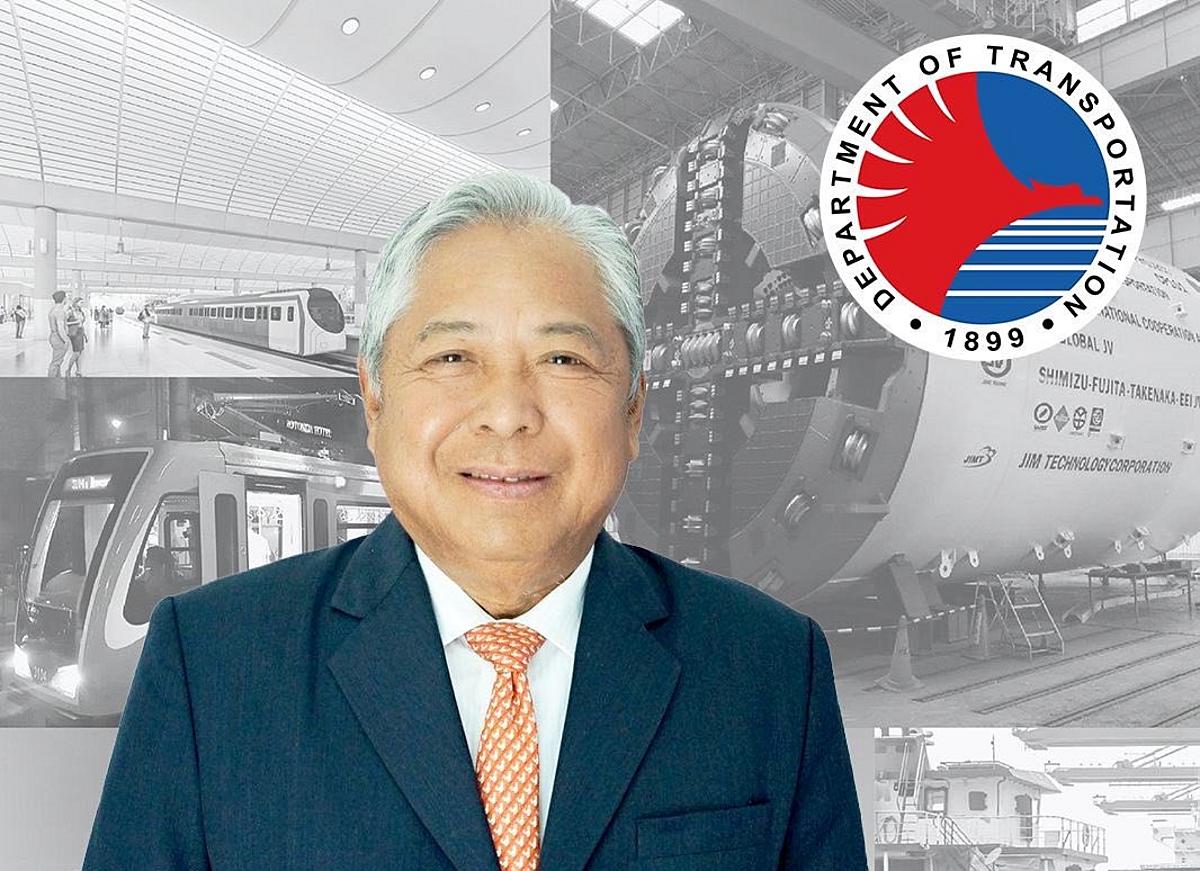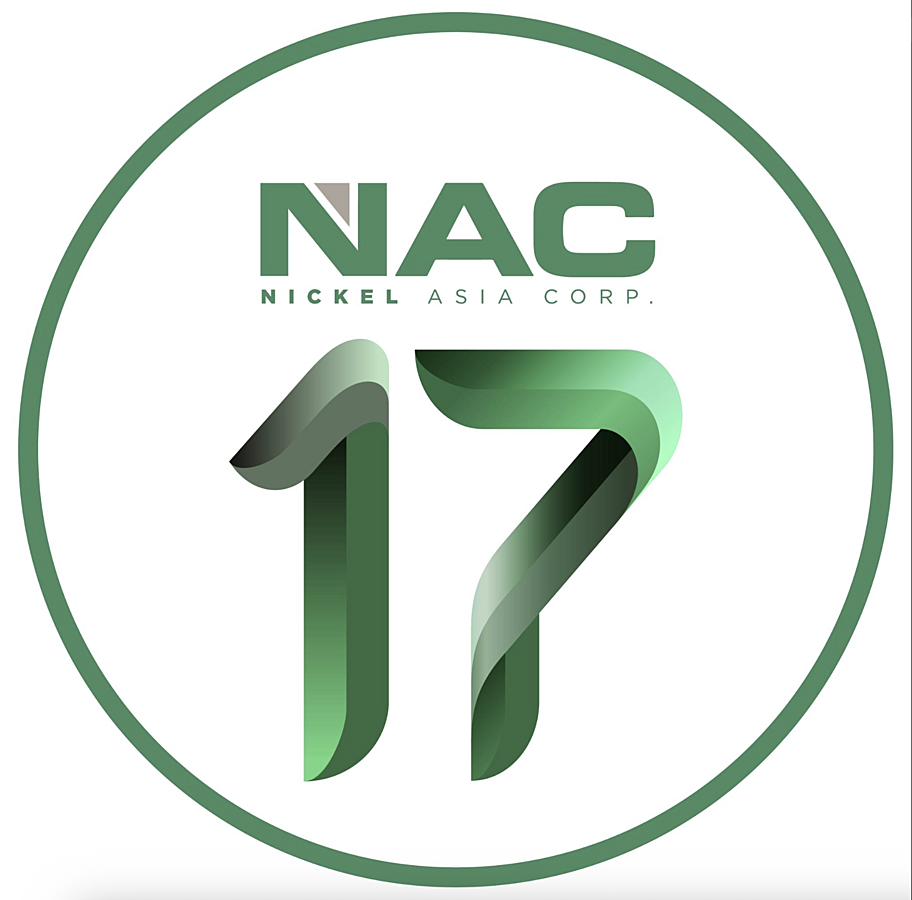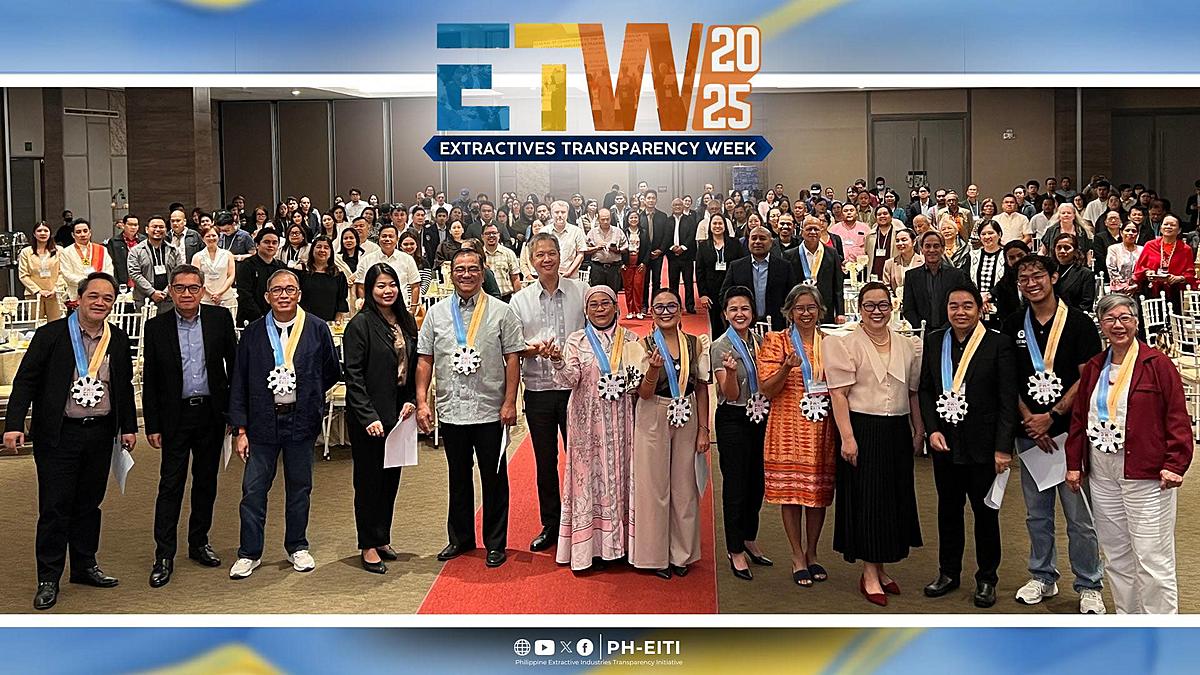President Ferdinand R. Marcos Jr. (center) presses the button to launch the Metro Manila Subway Project's tunnel boring machine in Barangay Ugong, Valenzuela City on Monday (Jan. 9, 2023). It marks the start of the construction of the tunnels for the PHP488-billion Metro Manila subway, which will span 33 kilometers across seven cities from Valenzuela City to Pasay City. (PNA photo by Alfred Frias)
President Ferdinand R. Marcos Jr. on Monday reiterated his vow to continue upgrading the country’s transport system to relieve commuters of their daily ordeals due to traffic congestion.
“We will continue to invest and improve our transportation system as well as pursue more projects in the years to come so that Filipinos can gain greater access to places of work, commerce, recreation, and other vital areas,” Marcos said in his speech during the launch of the Metro Manila Subway Project’s (MMSP) tunnel boring machine (TBM) at its depot in Barangay Ugong, Valenzuela City.
“Having an effective and efficient transportation system will have multiplier effects on employment, the economy, our society, it will bring comfort, convenience, an easier life for all,” he added.
Marcos said developments on the country’s first subway system allow Filipinos to look forward to “better days” as it would also spur economic development and job creation.
He thanked both the public and private sectors for working to ensure the realization of what he described as an “ambitious” endeavor.
In particular, he expressed gratitude to the Japanese government and the Japan International Cooperation Agency (JICA) for being active partners in the fulfillment of the Philippine infrastructure program.
According to Marcos, the Philippines would not have fulfilled its many infrastructure projects without the assistance of JICA.
“This tunnel boring machine highlights Japan’s expertise and technology and trailblazing contributions in the modern world and thus I am confident that they will help us shape our railway infrastructure and keep them at par with the highest international standards,” he said.
He expressed hope the subway would be completed on time.
“I hope that both of you and the DOTr (Department of Transportation) will not waver on your commitment to finish the contract package by the end of 2027 to ensure that Filipinos will get to enjoy the project at the soonest possible time,” he said.
Marcos likewise sought the public's continued patience, trust and support as big-ticket projects take years to complete.
“Let the launching of this tunnel boring machine become a testament to this administration’s commitment to continue to projects of the previous administration and more importantly build better more,” he added.
He described the launch of the TBM as “a very apt beginning” for a year with renewed vigor and commitment to his administration’s mission to improve the lives of Filipinos.
“We also gain inspiration from the selfless individuals who constantly strive to turn our vision for the transportation sector into a grand reality,” he said.
The PHP488.48-billion Metro Manila subway will stretch for about 33 kilometers across seven cities, from Valenzuela City to the Food Terminal Inc. in Bicutan, Parañaque City, with a “spur line” to Ninoy Aquino International Airport (NAIA) Terminal 3 in Pasay City.
It will be able to serve over 519,000 passengers daily once completed.
The project is also expected to generate 18,000 jobs and boost the economic activities of communities in Metro Manila.
‘New dawn of PH transport’
Matsuda Kenichi, minister and deputy chief of mission of the Embassy of Japan in the Philippines, believes that a “new dawn” is now “on the horizon” following developments on the Metro Manila subway project.
The idea was first proposed in 1973 under the then Urban Transport Study in the Manila Metropolitan Area.
“The plan was first initiated during the time of the late President Marcos Sr. Decades later, it can be considered a legacy that is now in the hands of His Excellency President Marcos Jr. to fulfill,” Kenichi said.
He congratulated Marcos and DOTr Secretary Jaime Bautista for their dedicated efforts and leadership despite the coronavirus pandemic.
Kenichi assured that the Japanese government will continue to work with the Philippines so that Filipinos can enjoy the benefits of a subway system.
“Please let me assure you that we, the Government of Japan, will continue to cooperate in this flagship project in a full-speed ahead manner until such time that Filipinos can finally enjoy the convenience of a subway,” he added.
‘Point of no return’
Bautista said the beginning of tunnel boring activities marks a “point of no return” for the project.
“We are going full speed ahead to complete the country’s first subway,” Bautista said.
He noted that there is an “urgent need” for improved railway transportation in the country, particularly to serve passengers at NAIA.
“During the recent holiday rush when I inspected NAIA Terminal 3, I discovered the urgent need of providing a railway station as one of the multi-modal land-based transport options for arriving passengers,” he said.
He cited President Marcos’ support for the project and the efforts of the Duterte administration.
“The launching of this tunnel boring machine become a testament to this administration's commitment, to continue the project of the previous administration, and more importantly, to build better more," he said.
He thanked the Japanese government and JICA for helping fund the project through its official development assistance loans.
The launch marks the start of construction for the MMSP’s Contract Package 101 (CP101), one of the project’s seven civil work contracts.
CP101 involves the construction of three underground stations in Quezon City and an additional semi-underground station in the northernmost part of the Valenzuela City depot.
In a press bulletin, the DOTr said a total of six TBMs would be used during the tunnel-boring phase of CP101, while stations will be completed using the “top-down” construction method.
Around 1.2 million cubic meters of soil are expected to be dug by the TBMs for the partial operability section of CP101, equivalent to 500 Olympic-size swimming pools.
“For the tunnels alone, the excavation will be around 711,000 cubic meters or an equivalent of 285 Olympic-size swimming pools,” it said.
A total of 7,419,940 cubic meters of soil, equivalent to 2,500 Olympic-sized swimming pools, will be excavated for the entire alignment of the MMSP.
Bridging the gap
In a statement, Senator JV Ejercito said the Philippines is years behind its neighbors in terms of infrastructure development and transportation modernization but the subway project will soon reduce the gap.
He said improving the country’s transportation system, especially railways, will boost efforts to revive the economy after being battered by the Covid-19 pandemic.
“With transportation, with railway systems, more than airports, movement of people, movement of goods will be easier. That will attract, of course, foreign investments. That will make doing business easy and more convenient,” said Ejercito, who also graced the event. “Transportation modernization and infrastructure development will cost a lot but the returns are enormous.” (with reports from Raymond Carl Dela Cruz, Leonel Abasola/PNA)

